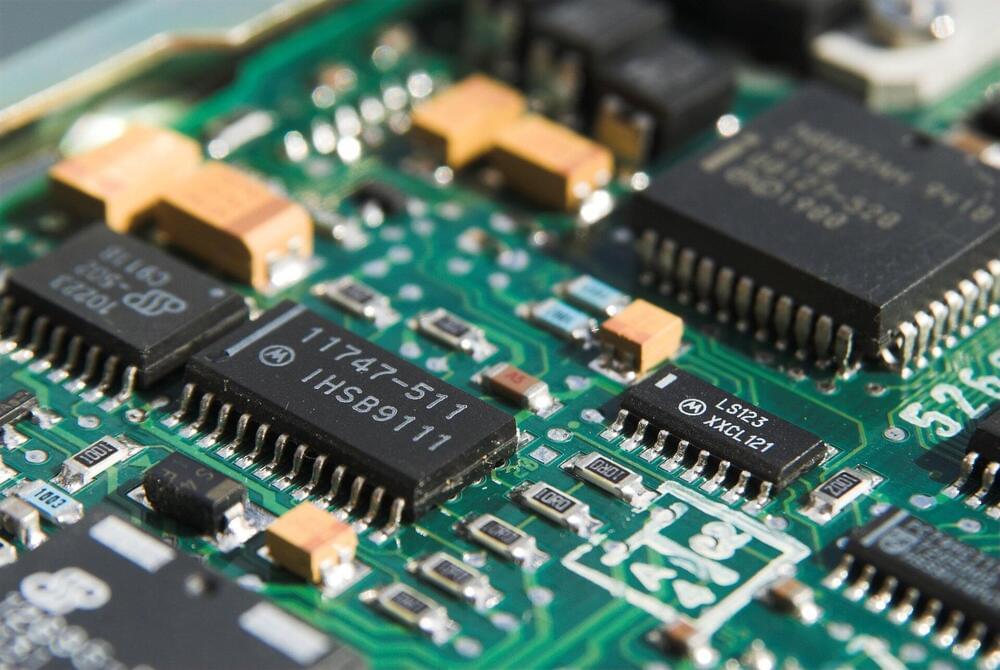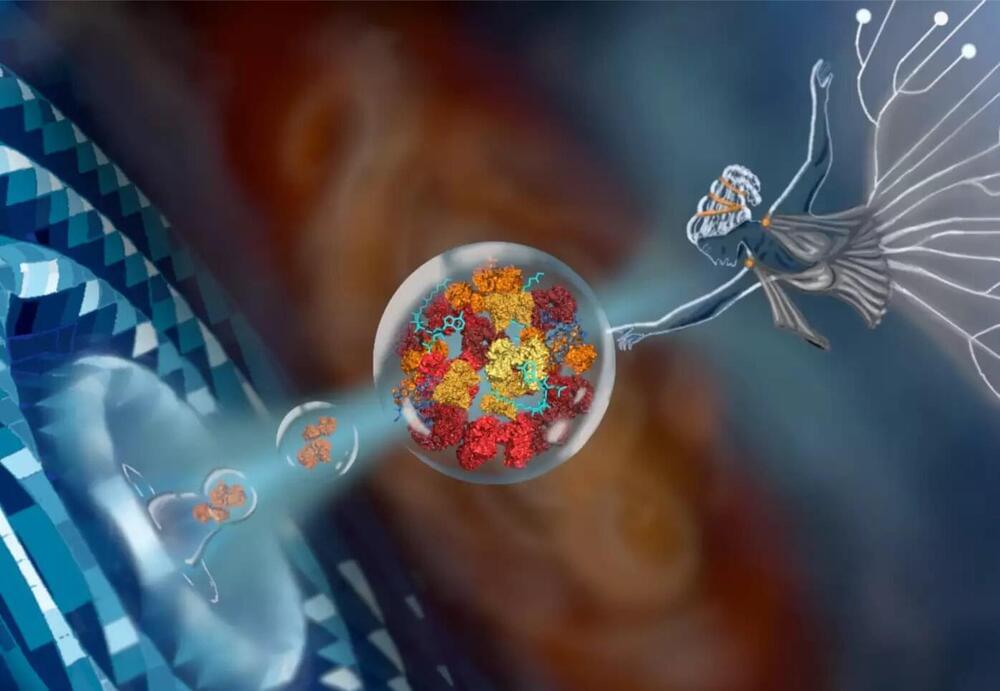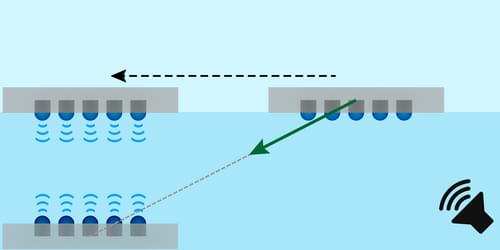A patient in New Zealand became the first person to receive the biotech’s medicine, which uses base editing to turn off a specific gene in the liver and thereby lower cholesterol.



Moore’s Law needs a hug. The days of stuffing transistors on little silicon computer chips are numbered, and their life rafts—hardware accelerators—come with a price.
When programming an accelerator—a process where applications offload certain tasks to system hardware especially to accelerate that task—you have to build a whole new software support. Hardware accelerators can run certain tasks orders of magnitude faster than CPUs, but they cannot be used out of the box. Software needs to efficiently use accelerators’ instructions to make it compatible with the entire application system. This translates to a lot of engineering work that then would have to be maintained for a new chip that you’re compiling code to, with any programming language.
Now, scientists from MIT’s Computer Science and Artificial Intelligence Laboratory (CSAIL) created a new programming language called “Exo” for writing high-performance code on hardware accelerators. Exo helps low-level performance engineers transform very simple programs that specify what they want to compute, into very complex programs that do the same thing as the specification, but much, much faster by using these special accelerator chips. Engineers, for example, can use Exo to turn a simple matrix multiplication into a more complex program, which runs orders of magnitude faster by using these special accelerators.

Machine learning is transforming all areas of biological science and industry, but is typically limited to a few users and scenarios. A team of researchers at the Max Planck Institute for Terrestrial Microbiology led by Tobias Erb has developed METIS, a modular software system for optimizing biological systems. The research team demonstrates its usability and versatility with a variety of biological examples.
Though engineering of biological systems is truly indispensable in biotechnology and synthetic biology, today machine learning has become useful in all fields of biology. However, it is obvious that application and improvement of algorithms, computational procedures made of lists of instructions, is not easily accessible. Not only are they limited by programming skills but often also insufficient experimentally-labeled data. At the intersection of computational and experimental works, there is a need for efficient approaches to bridge the gap between machine learning algorithms and their applications for biological systems.
Now a team at the Max Planck Institute for Terrestrial Microbiology led by Tobias Erb has succeeded in democratizing machine learning. In their recent publication in Nature Communications, the team presented together with collaboration partners from the INRAe Institute in Paris, their tool METIS. The application is built in such a versatile and modular architecture that it does not require computational skills and can be applied on different biological systems and with different lab equipment. METIS is short from Machine-learning guided Experimental Trials for Improvement of Systems and also named after the ancient goddess of wisdom and crafts Μῆτις, or “wise counsel.”
Brain-machine interfaces (BMIs) are devices that enable direct communication/translation between biological neuronal networks (e.g. a brain or a spine) and external machines. They are currently being used as a tool for fundamental neuroscience research and also for treating neurological disorders and for manipulating neuro-prosthetic devices. As remarkable as today’s BMIs are, however, the next generation BMIs will require new hardware and software with improved resolution and specificity in order to precisely monitor and control the activities of complex neuronal networks. In this talk, I will describe my group’s effort to develop new neuroelectronic devices enabled by silicon nanotechnology that can serve as high-precision, highly multiplexed interface to neuronal networks. I will then describe the promises, as well as potential pitfalls, of next generation BMIs. Hongkun Park is a Professor of Chemistry and Chemical Biology and a Professor of Physics at Harvard University. He is also an Institute Member of the Broad Institute of Harvard and MIT and a member of the Harvard Center for Brain Science and Harvard Quantum Optics Center. He serves as an associate editor of Nano Letters. His research interests lie in exploring solid-state photonic, optoelectronic, and plasmonic devices for quantum information processing as well as developing new nano-and microelectronic interfaces for living cells, cell networks, and organisms. Awards and honors that he received include the Ho-Am Foundation Prize in Science, NIH Director’s Pioneer Award, and the US Vannevar Bush Faculty Fellowship, the David and Lucile Packard Foundation Fellowship for Science and Engineering, the Alfred P. Sloan Research Fellowship, and the Camille Dreyfus Teacher-Scholar Award. This talk was given at a TEDx event using the TED conference format but independently organized by a local community.
In this landmark talk, Peter Diamandis shares how we are rapidly heading towards a human-scale transformation, the next evolutionary step into what he calls a “Meta-Intelligence,” a future in which we are all highly connected — brain to brain via the cloud — sharing thoughts, knowledge and actions.
He highlights the 4 driving forces as well as the 4 steps that is transforming humanity.
In 2014 Fortune Magazine named Peter Diamandis as one of the World’s 50 Greatest Leaders.
Diamandis He is the Founder & Executive Chairman of the XPRIZE Foundation which leads the world in designing and operating large-scale incentive competitions. He is also the Co-Founder & Exec Chairman of Singularity University, a graduate-level Silicon Valley institution that counsels the world’s leaders on exponentially growing technologies.
As an entrepreneur, Diamandis has started 17 companies. He is the Co-Founder and Vice-Chairman of Human Longevity Inc. (HLI), a genomics and cell therapy-based company focused on extending the healthy human lifespan, and Co-Founder and Co-Chairman of Planetary Resources, a company designing spacecraft to enable the detection and prospecting of asteroid for fuels and precious materials.
Peter Diamandis earned degrees in Molecular Genetics and Aerospace Engineering from the MIT, and holds an M.D. from Harvard Medical School.
This talk was given at a TEDx event using the TED conference format but independently organized by a local community.
Krishna Shenoy helps to restore lost function for disabled patients by designing prosthetic devices that can translate neural brain activity.
Krishna Shenoy directs the Neural Prosthetic Systems Lab, where his group conducts neuroscience and neuro-engineering research to better understand how the brain controls movement and to design medical systems to assist those with movement disabilities. Shenoy also co-directs the Neural Prosthetics Translational Lab, which uses these advances to help people with severe motor disabilities. Shenoy received his bachelor’s degree in electrical engineering from UC-Irvine and his master’s and doctoral degrees in the same field from MIT. He was a neurobiology postdoctoral fellow at Caltech in Pasadena and then joined Stanford University, where he is a professor of electrical engineering, bioengineering and neurobiology.
We’ve learned about a few techniques in biotechnology already, but the CRISPR-Cas9 system is one of the most exciting ones. Inspired by bacterial immune response to viruses, this site-specific gene editing technique won the Nobel prize in chemistry in 2020, going to Jennifer Doudna and Emmanuelle Charpentier. How did they develop this method? What can it be used for? Let’s get the full story!
Select images provided by BioRender.com.
Watch the whole Biology playlist: http://bit.ly/ProfDaveBio.
General Chemistry Tutorials: http://bit.ly/ProfDaveGenChem.
Organic Chemistry Tutorials: http://bit.ly/ProfDaveOrgChem.
Biochemistry Tutorials: http://bit.ly/ProfDaveBiochem.
Anatomy & Physiology Tutorials: http://bit.ly/ProfDaveAnatPhys.
Biopsychology Tutorials: http://bit.ly/ProfDaveBiopsych.
Microbiology/Infectious Diseases Tutorials: http://bit.ly/ProfDaveMicrobio.
Immunology Tutorials: http://bit.ly/ProfDaveImmuno.
History of Drugs Videos: http://bit.ly/ProfDaveHistoryDrugs.
EMAIL► [email protected].
PATREON► http://patreon.com/ProfessorDaveExplains.
Check out “Is This Wi-Fi Organic?”, my book on disarming pseudoscience!
Hear from Nobel laureate Jennifer Doudna on the four ways that CRISPR gene editing technologies will revolutionize healthcare.
In her 31 March talk at the Frontiers Forum, Prof Jennifer Doudna outlined how CRISPR-based therapies are already transforming the lives of patients with previously limited treatment options. She also gave her vision for how her serendipitous discovery will revolutionize healthcare for us all. The session was attended by over 9,200 representatives from science, policy and business across the world.
Jennifer’s keynote talk was followed by a discussion with global experts on access and ethical considerations:
• Prof Andrea Crisanti, Imperial College London.
• Prof Françoise Baylis, Dalhousie University.
• Dr Soumya Swaminathan, Chief Scientist, World Health Organization.
2022 marks the 10th anniversary of Jennifer’s groundbreaking development of CRISPR-Cas9 as a genome-engineering technology, with collaborator Prof Emmanuelle Charpentier. The two earned the 2020 Nobel Prize in Chemistry for their work, which has forever changed the course of human and agricultural genomics research. Jennifer Doudna is the Li Ka Shing Chancellor’s Chair and a Professor in the Departments of Chemistry and of Molecular and Cell Biology at the University of California, Berkeley, and Founder of the Innovative Genomics Institute.
The Frontiers Forum showcases science-led solutions for healthy lives on a healthy planet. Watch previous sessions at https://forum.frontiersin.org.
MAIN TALK


Centimeter-scale objects in liquid can be manipulated using the mutual attraction of two arrays of air bubbles in the presence of sound waves.
Assembling small components into structures is a fiddly business often encountered in manufacturing, robotics, and bioengineering. Some existing approaches use magnetic, electrical, or optical forces to move and position objects without physical contact. Now a team has shown that acoustic waves can create attractive forces between centimeter-scale objects in water, enabling one such object to be accurately positioned above another [1]. The scheme uses arrays of tiny, vibrating air bubbles that provide the attractive force. This acoustic method requires only simple equipment and could provide a cheap, versatile, and gentle alternative technique for object manipulation.
Researchers are developing techniques that use acoustic waves to position objects such as colloidal particles or biological cells. Attractive forces are produced by the scattering of sound waves from the objects being manipulated. One limitation of this approach, however, is that positioning is more accurate with waves of higher frequency (and thus smaller wavelength), but higher frequencies are also more strongly absorbed and attenuated by many materials.